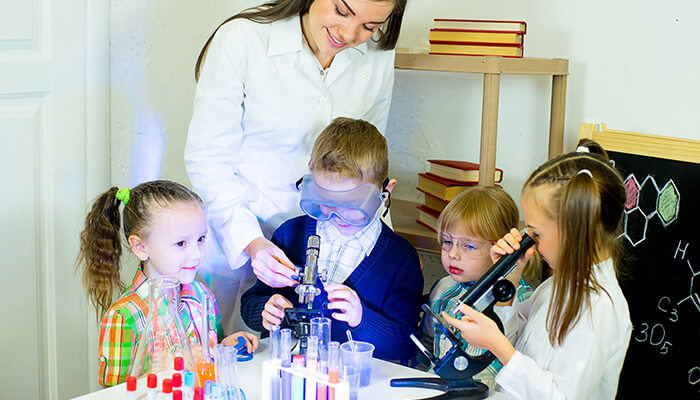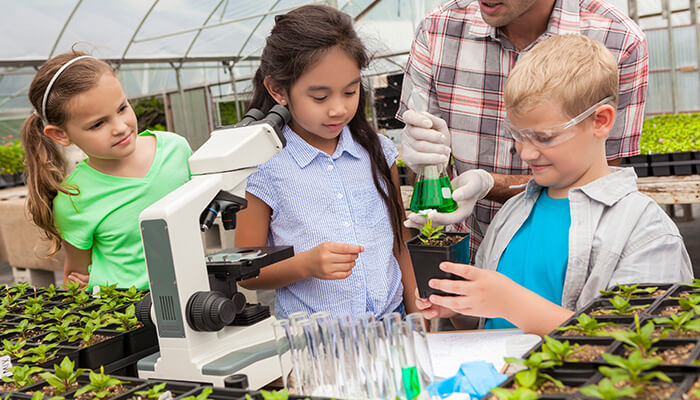Science is all around us, from the food we eat to the air we breathe. Science experiments are a great way to spark curiosity in children and teach them about the world around them. However, with so many distractions present in the modern world, it can be difficult to keep kids engaged in science experiments. Many kids find science boring or too difficult to understand, which is why it is important to find ways to make science experiments interesting for all ages.
In this blog post, we will explore how to turn chemical reactions into fun and exciting experiments that kids of all ages will enjoy. We will discuss different approaches to teaching science, including hands-on activities, visual aids, and interactive games. We will also look at how to present complex scientific concepts in a way that is easy to understand for younger children.
Start experimenting using kits by Generation Genius!
1. Introduce scientific concepts in a relatable way
Introducing scientific concepts in a relatable way is key to making science experiments interesting for kids of all ages. This means breaking down complex scientific ideas into simpler terms and using analogies children can understand. For example, when discussing chemical reactions, instead of using terms like “reactants” and “products,” you could describe the process as a recipe where different ingredients mix to create a new substance. It’s also helpful to use examples that children can relate to, such as explaining the process of digestion using food that they commonly eat. Children are more likely to develop a deeper understanding and long-term interest in scientific concepts by making science relatable.
2. Use hands-on activities to engage the students
When students can be actively involved in the scientific process, it helps to keep them engaged and interested in the subject matter. Hands-on activities can include a wide range of experiments, such as building models, conducting chemical reactions, and exploring different aspects of biology. These activities are not only fun for students, but they also help to reinforce the concepts being taught by making them relevant and tangible. Additionally, hands-on activities allow students to practice critical thinking skills and problem-solving, providing a well-rounded learning experience.
3. Encourage critical thinking and problem-solving
Encouraging critical thinking and problem-solving is a crucial aspect of making science experiments interesting for kids of all ages. By allowing children to choose their own experiments or analyze and interpret data on their own, you can help guide them toward developing their analytical and creative skills. For younger children, try to prompt them to describe their observations and use their imagination to make predictions about what might happen next. For older children, you can challenge them to design their experiments, evaluate the results, and critically analyze the methodology used.
4. Showcase the impact of science in everyday life
As parents, educators, and caregivers, it’s essential to showcase the impact of science in everyday life to spark curiosity and interest in children. One approach is to perform science experiments that demonstrate how science concepts translate into real-world applications. For example, baking a cake involves chemical reactions, explaining why certain ingredients are essential and how they react with one another to produce the final product. Additionally, demonstrating the science behind plant growth and photosynthesis can showcase biology concepts and how they’re responsible for the food we eat.
5. Incorporate multimedia resources
One of the best ways to make science experiments interesting for children of all ages is to incorporate multimedia resources. These resources can include videos, animations, interactive simulations, and audio recordings. Using multimedia resources can enhance the learning experience by providing a visual representation of the experiment, allowing children to see the results in action. Additionally, using multimedia resources can help children better understand complex scientific concepts by breaking them down into simpler visual representations. For example, animations can be used to show how chemical reactions occur on a molecular level. By incorporating multimedia resources, educators can make science experiments more accessible and fun for children of all ages.
6. Take advantage of nature’s laboratory
Nature’s laboratory is an excellent place to conduct science experiments and explore the principles of chemical reactions in biology. Encourage children to explore and observe nature, and guide them in selecting simple experiments. Take them on nature walks and let them collect plants, flowers, and seashells to experiment with later. You can teach your kids about biology by showcasing the diversity of plants, animal species, and their habitats. For instance, you can introduce them to photosynthesis and help them identify different leaf structures. Additionally, you could build a birdhouse with your kids or set up a bird feeder and observe their behavior.
7. Make use of easy-to-find materials
When it comes to science experiments, it’s important to use materials that are easy to find and readily available. This is especially crucial when conducting experiments with children, as it eliminates the need for complex equipment and reduces the risk of accidents. By making use of everyday household items like vinegar, baking soda, food coloring, and dish soap, you can create a range of fun and engaging experiments that are both safe and exciting for kids of all ages. This not only helps to keep costs down, but it also encourages children to think critically and creatively about the world around them as they learn to recognize the scientific principles at play in everyday objects and occurrences.
8. Utilize technology to bring science to life
One of the best ways to make science experiments fun and engaging for kids is to utilize technology. There are countless resources available online that can help bring scientific concepts to life and make experiments interactive and exciting. For instance, numerous educational apps demonstrate chemical reactions or allow kids to simulate and observe biological processes. Some online videos and animations can show complex scientific concepts visually and engagingly. Virtual reality and augmented reality programs can allow kids to explore scientific concepts in a fully immersive and interactive way. By using technology, educators and parents can spark children’s interest in science and inspire them to pursue STEM-based careers.
In conclusion, science experiments can be fun and interesting for kids of all ages when designed creatively and thoughtfully. By using everyday materials found around the house, parents and educators can make science more accessible and exciting for kids. Making these experiments hands-on and interactive allows kids to learn by doing, which can spark a lifelong interest in science. Whether it’s through chemical reactions or exploring the building blocks of biology, there are endless possibilities for making science experiments engaging and enjoyable for children.



